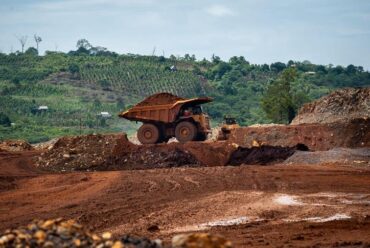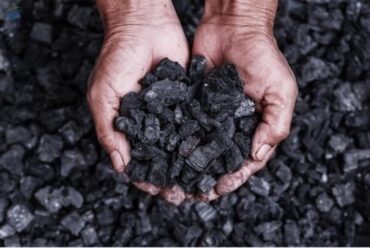Definition of Biomass Energy, Benefits, and Types
Until now, biomass is still one of the renewable energy sources most needed by mankind. No wonder if its presence could be one of the most important alternative energy in the world. Therefore, make sure you know more about the meaning, benefits, and various types.
WHAT IS BIOMASS ENERGY?
Biomass energy is energy from organic materials that can be used in the form of biofuels or directly. The term itself is synonymous with living organisms. Of course, its use in Indonesia is not something that is quite foreign anymore.
Later these raw materials can be obtained from those who have just died or are still alive. All can still be used as industrial materials and fuel. That way, its use is very functional, including for producing fibers and chemicals.
Its presence is also one of the most important sources of energy besides fossil fuels which actually only have a limited amount. The formation process itself can go through the process of photosynthesis such as when plants look for food.
ADVANTAGES AND DISADVANTAGES OF BIOMASS ENERGY
If you still don’t understand the role of biomass, it’s important to know its advantages and disadvantages. Its presence itself is very important as alternative energy in the future. To be clearer, then make sure to understand the reviews in the following explanation:
FOSSIL FUEL REPLACEMENT SOLUTIONS
As you know, fossil fuels such as coal to petroleum certainly have a limited amount. Until now, the number continues to decrease because its use is increasing. Of course, as a human it is important to immediately switch to other energies.
Fossil fuels themselves take millions of years to form. In contrast to biomass energy which can be present as a substitute solution because it can indeed be renewed. No wonder if it could be the most effective alternative energy.
ABLE TO REDUCE POLLUTION
The presence of biomass is also effective in helping to reduce pollution. This can even be done in various ways. Such as using waste materials and then using them as an energy source. Until now, its utilization has increased because it has quite a lot of advantages.
Certainly quite effective in minimizing the amount of waste in a location. In addition, biomass can also help reduce levels of methane, a greenhouse effect gas that is quite dangerous. By using biomass energy, it is far safer for the surrounding environment.
RENEWABLE ENERGY SOURCES
Biomass can come from animals or plants/plants. That way, it is very appropriate if it is categorized as a renewable energy source, especially in the future when fossil fuels are running out. This is because the raw material for this type of biomass is indeed renewable.
For example, a plant that can continue to grow repeatedly in a field. Of course, it is very easy to minimize costs because of raw materials without the need to switch to another place. In addition, this energy can always be available and never runs out.
LIMITED SOURCES
If some of the points above are the advantages, then also know the disadvantages. That is, they tend to have limited resources. Even though it is included as a renewable energy source, it is quite difficult to obtain it.
For example, if it comes from plants/plants. But apparently it can’t grow in every year. In addition, processing also requires various processes. Starting from harvesting to processing, it requires quite a lot of energy and resources.
CAN SAVE CARBON
This is one of the other disadvantages of using biomass. Its presence itself does contain carbon and can release carbon dioxide, especially when combustion occurs. Then for the re-arrest itself requires a varying amount of time.
For example, when you need to recapture carbon stored in energy from forests. Of course it could be much higher when compared with other forms. This includes the disadvantages of using biomass.
BIOMASS ENERGY TYPES
After knowing the meaning and types, it is important for you to understand what are the types of biomass energy. Moreover, its use in Indonesia is quite a lot and some of them are also quite popular. Below is the full review:
BIOGAS
This type of biomass is methane gas. The gas occurs through an anaerobic fermentation process so without using air from the role of anaerobic bacteria / methane bacteria. Examples include organic waste, feces, and animal waste.
In some examples the biogas will later decompose thanks to the presence of these bacteria so that methane gas is formed. It’s no wonder that you can find biogas easily in your surroundings without worrying about its production because it can be updated continuously.
BIODESEL
Including the type of biomass commonly found in plants. Starting from cotton, coconut, to palm oil. Currently, its use in Indonesia is very popular, especially as an alternative fuel. No wonder if it could be a source of renewable energy.
The most commonly used biomass energy product is crude palm oil. Of course, these raw materials are very useful because they can be used for consumption. In addition, it can also be used as fuel.
ETHANOL
Another type is ethanol, namely fuel derived from sugar. Generally derived from various types of plants around. Starting from wheat, potatoes, corn, to sugarcane. Its presence itself has an important role as a chemical.
Including for the manufacture of fuel to cosmetics. For example, wood fiber can produce ethanol. It’s no wonder that this type of energy is still very closely related to everyday life around us.
HOW BIOMASS WORKS
Biomass will work according to the type of material used. For example, if it comes from plants. Chemical energy can be stored in the form of carbohydrates and then released into the environment as a waste product.
When the plant is burned or dies, its chemical energy will be released into the surrounding environment so that it can be used as energy. Then it can generate electricity through a steam turbine.
No wonder it is often said to be energy that is much cleaner and environmentally friendly. Especially when compared to fossil fuels. The difference between the two is that biomass will release its stored energy throughout its life.
That was a complete explanation about biomass. Of course, its presence is very important in order to produce the best energy-making raw materials that can be converted into several products. Its presence can also be a solution in the midst of depleting fossil fuels.
FAQs:
WHAT MATERIALS CAN BE PROCESSED INTO BIOMASS?
Biomass can come from various types of materials. Whether it’s agricultural waste, forest waste, trees, and plants. Examples include bagasse, straw, sweet potatoes, palm oil, grass, manure, and feces.
MOST OF THE BIOMASS OBTAINED BY PLANTS DURING GROWING COMES FROM ?
Biomass raw material derived from plants, as long as it grows, is obtained from the absorption of carbon dioxide in the air and then enters through the mouth parts of the leaves (stomata). Furthermore, it will be processed through photosynthesis so that it turns into organic matter.
read also: Biomass Conversion and Biorefinery







